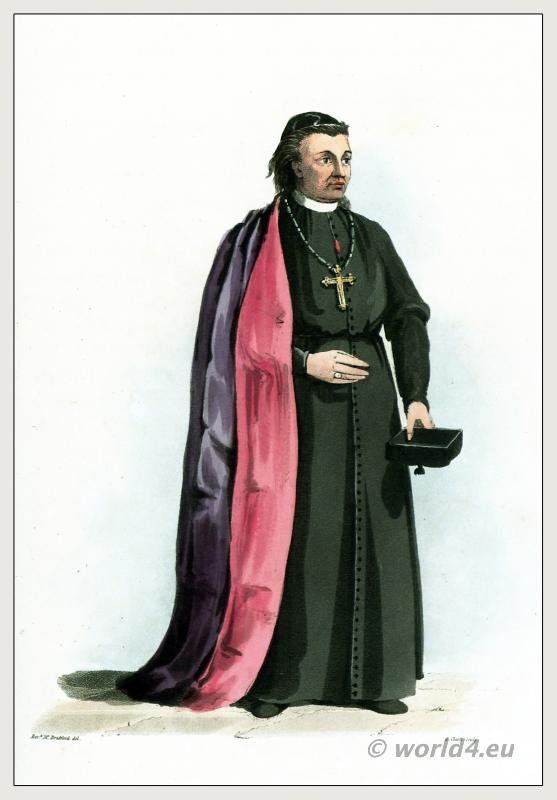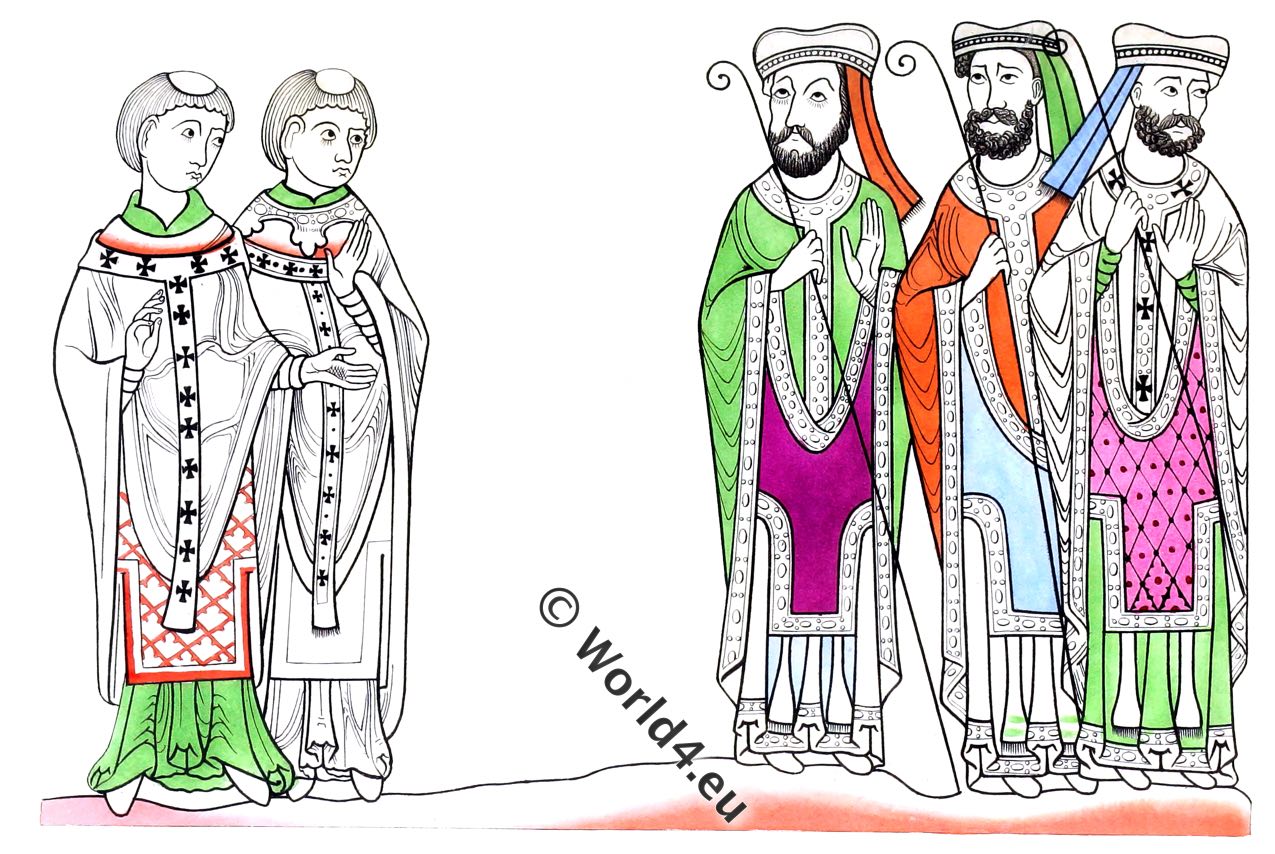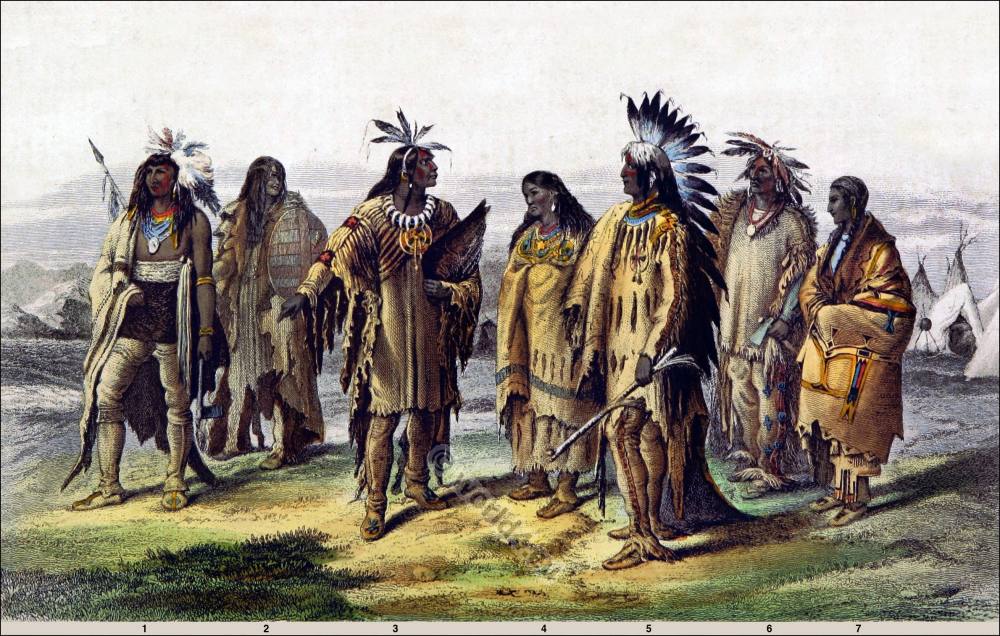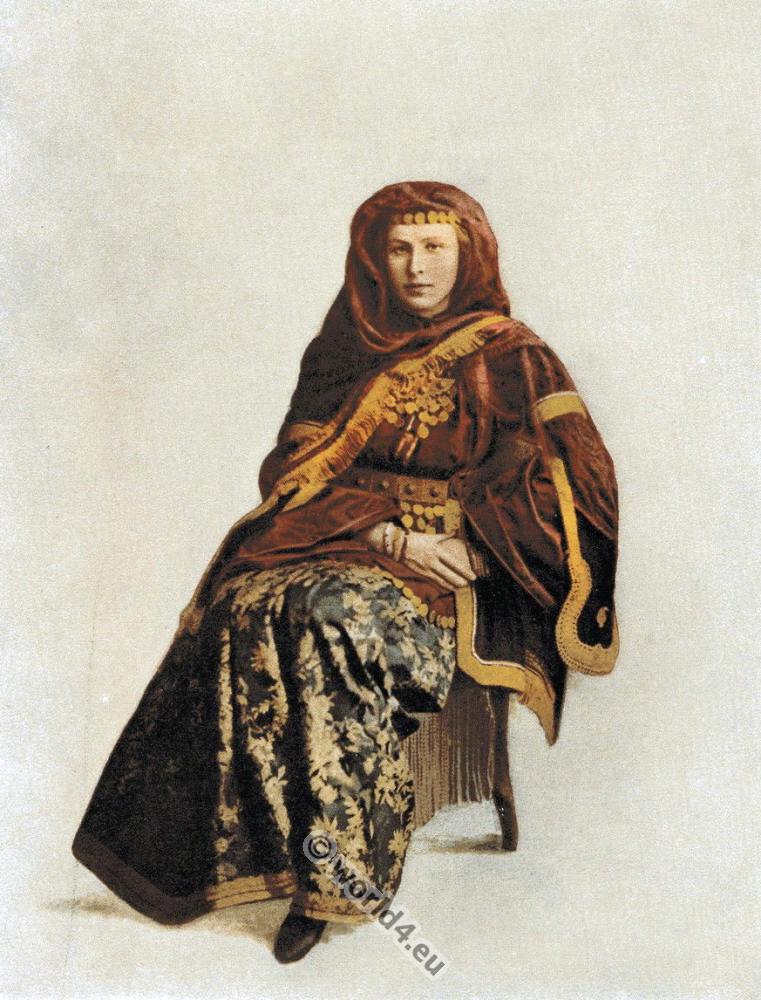The Armenian bishop of Djulfa, Azerbaidjan. c. 1886
Etchmiadzin Cathedral
The cathedral of Eschmiadsin is an Armenian-apostolic church in the Armenian province of Armawir. It is part of a monastery complex and cathedral of the Patriarch of the Armenian-Apostolic Church, of the Catholicos of the Holy See of St. Eschmiadsin and All Armenians. A church building erected on the foundation of a pagan temple at the behest of the first Catholicos Gregor the Illuminator was commissioned in August 303. The church, which was basically restored in the 17th century, has been listed as a UNESCO World Cultural Heritage since 2000.
Armenian women. Historical costumes.
Related:
- Traditional Parsis in India.
- Chinese sceneries in 19th century.
- Typical pictures of Indian Natives.
- Costumes of Japan and Indonesia by Emile Gallois.
- The Indian Mughal Empire.
- The Persians in India.
- Plant drawings from an Indian Cotton Printer`s Pattern Book, 1910.
- Historical Asia costumes by Auguste Wahlen.
- Costumes of all countries by Alexandre Lacauchie 1850s.
- Historical and folk costumes by Franz Lipperheide.
- The costume of Turkey. Ottoman Empire 18th century.
- Costumes and scenery of Afghanistan.
- Provincial Russia. Russian Costume and Culture.
- Tyrolean national costumes 1835.
- Souvenir de L’Exposition Universelle de Vienne.
- Traditional Dutch national costumes.
- Traditional French national costumes.
- The Switzerland national costumes of 17th – 19th century originals.
- Folk dresses from Norway, Dutch, Germany and Hungaria.
- Mexico by Carl Nebel 1836.
- Costume of the Russian empire by Edward Harding.
- Serbian national costumes by Vladimir Kirin.
- Historical European costumes by Auguste Wahlen.
- The Highlanders of Scotland, 1870.
- Africa, the landscape and the people 1931.
- Historical costumes from Africa, America and Oceania.
- Traditional folk costumes of Italy and France in 1821.
- The Serbs in the Adriatic. Their types and costumes 1870-1878.
Discover more from World4 Costume Culture History
Subscribe to get the latest posts sent to your email.










